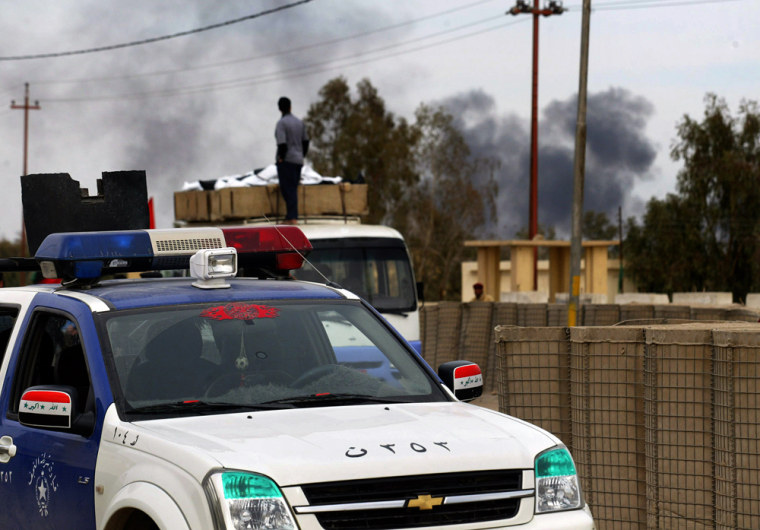U.S. pilots are changing tactics and procedures after four helicopters crashed in the last two weeks, the chief military spokesman said Sunday, acknowledging for the first time that the aircraft were lost to hostile fire.
The crashes occurred since Jan. 20 during a sharp increase in violence, which the government said has claimed nearly 1,000 lives in the past week alone. At least 93 people were killed or found dead Sunday, most of them in Baghdad, police reported.
Maj. Gen. William Caldwell told reporters that the investigations into the crashes of three Army and one private helicopters were incomplete but "it does appear they were all the result of some kind of anti-Iraqi ground fire that did bring those helicopters down."
It was the first time that a senior figure in the U.S. Iraq command had said publicly that all four helicopters had been shot down. Three crashed in mostly Sunni areas and the fourth was shot down during a fierce battle with Shiite cultists near Najaf.
Despite the losses, Caldwell said it was premature to conclude that the threat to U.S. aircraft posed by Sunni insurgents and Shiite militiamen had increased dramatically.
"There's been an ongoing effort since we've been here to target our helicopters," Caldwell said. "Based on what we have seen, we're already making adjustments in our tactics and techniques and procedures as to how we employ our helicopters."
Caldwell did not elaborate on the new procedures, presumably for security reasons. In the past, defensive measures have included flying lower and faster, varying routes and using zigzag patterns over dangerous areas.
Threat of 'new ways' to hit aircraft
The crashes follow insurgent claims that they have received fresh stocks of anti-aircraft weapons -- and a recent boast by Sunni militants that "God has granted new ways" to threaten U.S. aircraft.
In December, a spokesman for Saddam Hussein's ousted Baath party, Khudair al-Murshidi, told The Associated Press in Damascus, Syria, that Sunni insurgents had received shoulder-fired anti-aircraft missiles and "we are going to surprise them," meaning U.S. forces.
Al-Murshidi did not say when or how the missiles were obtained.
Insurgents have used SA-7s, a shoulder-fired missile with an infrared homing device, against U.S. and British aircraft since the start of the insurgency in 2003.
In an Internet statement, the al-Qaida-affilated Islamic State of Iraq claimed responsibility for the latest crash -- an Apache Longbow helicopter that went down Friday north of Baghdad, killing two crew members.
"We tell the enemies of God that the airspace of the Islamic State in Iraq is prohibited to your aircraft just like its lands are," the statement said. "God has granted new ways for the soldiers of the State of Iraq to confront your aircraft."
It was unclear if the "new ways" referred to new and advanced anti-aircraft weapons -- such as SA-18 missiles -- or was simply a boast.
U.S. military helicopters are equipped with long-range sensors, radar jammers and infrared jammers. But they have proven vulnerable to intense machine gun or small arms fire, as well as rocket-propelled grenades.
The crashes have occurred in the run-up to the new U.S.-Iraqi security plan, in which an additional 21,500 American troops and about 8,000 Iraqi soldiers will be sent mostly to Baghdad in a bid to quell sectarian violence.
Air tactics changed in 2003
In late 2003, the U.S. ordered changes in air tactics, including flying lower and faster to confuse insurgent gunners and varying routes.
The United States has lost more than 50 helicopters in Iraq since May 2003, about half of them to hostile fire. But the loss of four helicopters in two weeks has raised new questions about whether Iraqi insurgents are using more sophisticated weapons or whether U.S. tactics need changing.
Three of the latest crashes involved Army helicopters — two Apaches and one Black Hawk. The fourth was an OH-6A observation helicopter operated by the Blackwater USA security firm. Twenty Americans, including four civilians, died in the crashes.
